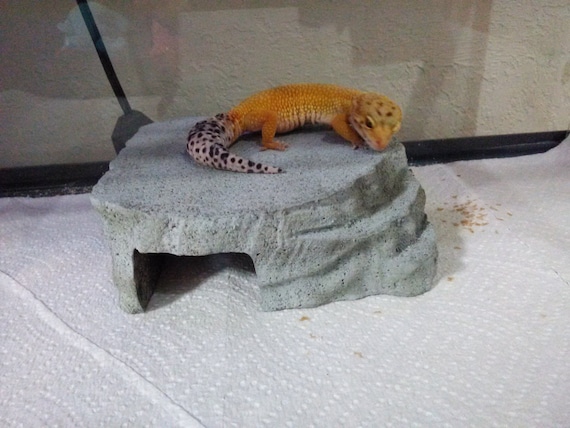

CLEANING LEOPARD GECKO HIDES FREE
Also make sure the soil and sand are free from fertilizers and pesticides.Įach DIY mix will be slightly different in consistency each time. Do not use calcium sand or beach sand in the mix. We recommend using a 50:30:20 mix of organic topsoil, play sand and clay. It is a cheap and simple way to add a unique, natural look to your gecko’s enclosure. DIY Blended SubstrateĪ do-it-yourself substrate is a much cheaper alternative to a bioactive setup. Depending on the size of your reptile tank it will cost anywhere from $75 to $300. It also requires a strong knowledge of horticulture and self-sustaining ecosystems. Setting up a bioactive enclosure is expensive and time-consuming. Unfortunately this substrate is the most difficult to set up properly. While the white urates of your gecko’s poop should still be removed, the “cleanup crew” and beneficial bacteria will break down the dark, organic part. Once set up and fine-tuned for temperature and humidity, bioactive enclosures require little maintenance and cleaning. It also allows your Gecko to interact with the substrate as it would in the wild: digging, burrowing, and finding small arthropods to eat.Īnother great benefit of a bioactive substrate is that it requires much less cleaning than other substrates because of the other organisms that live in it. This substrate looks very natural and highlights the exotic and wild appearance of your leopard gecko. Bioactive substrates closely mimic the natural habitat of leopard geckos.Ī bioactive substrate consists of several layers of gravel ( for drainage), soil and clay mixtures. Bioactiveīioactive enclosures are miniature ecosystems with natural soil, live plants and a “cleanup crew” of live bacteria to break down waste. These activities are fun to watch and also provide mental enrichment to a Gecko. The best substrates will also allow them to show off their natural behaviors such as: digging, climbing and creating burrows. Most importantly Leopard Gecko substrate should be safe and not pose a risk of impaction or bacterial growth.

Wood Chips And Shavings 9 Best Leopard Gecko Substrates Leopard gecko walking through grassy shrublands.DIY Blended Substrate / Naturalistic Mix.We will break down the best and worst substrates in the section below: Not every option on the list below is suitable for this species, and those that are have pros and cons. Adding to the confusion, a few substrates ( especially sand) are marketed as suitable for geckos when they are actually not.īelow is a complete list of Leopard Gecko substrates.
CLEANING LEOPARD GECKO HIDES INSTALL
Instead, there are a number of alternative substrates that are easy to find, install and safe to use.Īlthough there are many great substrates for leopard geckos, there are also some that are highly unsafe. However, replicating the environment of the Middle East in a terrarium is expensive and not easy. Substrate for a Leopard Gecko should mimic their wild habitat as closely as possible. The substrate found in their natural range is mostly hard, clay and gravel covered in a thin layer of sand and scattered with boulders, shrubs and grasses. There is also plenty of vegetation cover and places to hide from predators and the sun. Their habitat is largely made up of barren grasslands and rocky outcrops. Leopard Gecko are actually from Afghanistan, Iran and Iraq. This is not only wrong, but it is also very dangerous to their health. This leads to new owners putting sand in their geckos’ enclosure. The quality of their substrate is extremely important.Ī common misconception about leopard geckos is that they are desert animals that live in hot, sandy environments.

This is especially true for pet geckos who run, walk, sleep and eat on the ground. They spend most of their time directly on substrate. Leopard Geckos are very good at climbing, but they are actually ground-dwelling lizard. Choosing a Substrate All About Leopard Gecko Substrate.



 0 kommentar(er)
0 kommentar(er)
